Home » Wind Turbine » What is a Bladeless Wind Turbine?
What is a Bladeless Wind Turbine?
The bladeless wind turbine is a flexible cylindrical structure that harnesses wind energy from a resonance frequency between the system and air flow, which generates electricity through an alternator system.
Introduction
The impact of the current generation’s energy consumption on the next generations poses issues that need to be effectively addressed. In 2018, global energy consumption peaked at 13,864.9 Mtoe. This year’s increase in total energy consumption of 2.9%, which is double the average growth of the 10 preceding years, highlights the urgency and importance of these issues. Facing this enormous problem, national governments need to work closely together to develop timely, coherent, and considered policies. Renewable energy plays an important role in mitigating and adapting to climate change in countries around the world. Electricity generation from sustainable sources achieved 7% growth in 2020, accounting for a large proportion of the 3% increase in renewable energy use. Renewable electricity generation in 2021 is expected to expand by more than 8% with a major contribution of solar photovoltaics (PV) and wind.
Besides the obvious advantages of renewable energy, such as zero greenhouse gases (GHG) emissions and low operational costs, solar panels and wind turbines also have their own drawbacks. The use of solar panels raises enormous questions about expired solar cells, while wind turbines have been considered unsuitable for urban areas. Harnessing wind power in urban areas requires overcoming the disadvantages of vibration and noise as well as challenges related to the space of installation. Bladeless wind turbines (BWT) are an advanced technology that converts wind energy to electrical energy in cities.
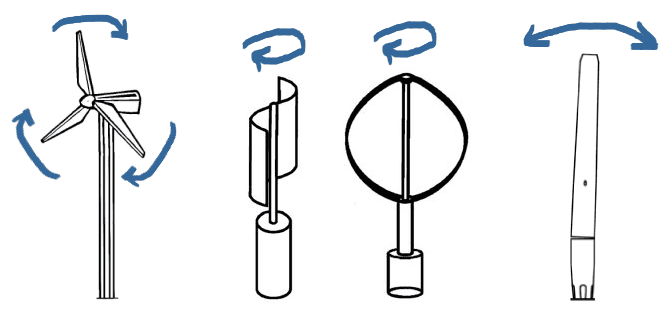
BWT can easily be deployed in urban areas and even integrated into the overall architecture of buildings. The advantages of this approach are that it reduces noise, avoids intermittent shade effects, and prevents impacts on migratory birds. Considered a solid-state wind energy transformer, the maintenance costs are generally lower than those of conventional wind turbines. BWT can be combined with solar energy panels to form a hybrid system, which could be considered for increasing electrical power production and improving the system’s overall efficiency. Accordingly, BWT could be considered a sustainable solution for wind energy in cities.
Occupying only vertical space, the cylindrical form of BWT was judged by experts to be suitable for implementation in residential areas. With the advanced design, BWT would contribute to the modernity in urban architecture.
Current State
The innovative aspects of bladeless wind turbines and their capacity to produce electricity at low wind speeds under turbulent flow conditions in the city surroundings are the key factors that promote the deployment of this technology in built-up areas with significant potential for wind energy. Such areas in cities include rooftops of high-rise buildings, areas around multistory buildings, city roads, railway tracks and subway networks.
Despite being in the prototype stage, the vortex bladeless has proven its value as a new wind energy technology particularly designed for on-site generation as it can be placed in an open environment or residential areas. In addition, bladeless wind turbines can work on or off grid, along with solar panels or other generators.
Two commercial-scale bladeless turbines have been developed with generation capabilities of 100 W and 4kW. Smaller-scale turbines measure 3 meters in height and weight only 10 kilograms but supply enough power for lighting and some utilities. Since such small turbines are not yet industrially produced, an investment is estimated to cost about $250. Larger-scale turbines with a height of 13 meters and total weight of about 100 kilograms can generate continuous electricity for a house if installed in a location with enough wind. A tentative price for this model is evaluated to be about $5000.
In addition to the two commercial models, development of a giant vortex turbine model is also underway. Such a bladeless turbine would measure 150 m in height and 100 tons in weight and was calculated to be able to generate 1MW. The estimated costs for this model have not been determined yet but are expected to have a lower price in proportion to its capacity compared to the two smaller models.
The average cost of power generation per Watt for bladeless wind turbines may be higher than that for solar panels. However, bladeless turbines are still economically attractive in windy regions where the system are able to function more effectively than solar panels do.
Opportunities and Challenges
Urbanization and growth in economic activity are the cause of 75 percent of global primary energy consumed by urban areas, and around 60 percent of the world’s total greenhouse gases are produced in cities.

Authorities need to address global climate change by 2030, while meeting the goals set for reducing air pollution, energy security, and long-term economic growth. Through improving the share of renewable energy in electricity production, European countries have the opportunity to become nearly carbon neutral by 2050. For example, Finland is aiming to become self-sufficient with regard to electricity production in 2025, which is based on renewable energy.13 More than 260 GW of renewable energy capacity has been generated in 2020, to which wind energy contributed 111 GW.14 Unlike solar PVs, wind energy systems are able to operate during the day and nighttime. The adoption of wind energy systems is worth considering as a technological strategy for sustainable development.
The urban wind energy resource has not efficiently been explored yet. Deploying wind turbines in cities encounters some challenges such as availability of sites, impacts of grid power quality, and public acceptability. In addition, due to the presence of obstructions, the turbulent nature of wind is a complication. Thus, small wind turbine technology adapted to the built environment was developed. Small wind turbines are environmentally friendly. The life cycle of a wind turbine model (V90,3MW) was investigated, and the system was estimated to become carbon neutral after 6.6 months of energy production. Despite advanced design techniques for small wind turbines, technical matters related to safety, vibration, and noise under low urban wind regime and turbulent flow cannot be perfectly controlled due to the rapidly changing wind direction and the presence of obstacles. The prominent concerns of small turbines include fatigue damage, inconsistent power output, and unexpected downtimes due to failure during operation. Turbulent wind interactions with building structures have impeded the safety, durability and performance of small turbines.
These problems can be addressed with the design of BWT, which harvests energy from oscillation. BWT is designed to generate energy from low wind speeds in residential areas. With its cylindrical shape BWT adapts quickly to wind direction and wind turbulent intensity by a self-synchronization system that allows to capture a wider range of wind speeds and stay in resonance without any interference. Experimental and analytical data showed that BWT can generate electricity at wind speeds as low as 3 m/s, where conventional wind turbines may not attain required performance. Without moving gears, BWT overcomes the disadvantages of small turbines such as friction losses, and investment and maintenance costs. Compared to small turbines, the price of BWT and the cost required for installation are of interest to investors.
With wind speeds in the range of 3 to 8 m/s, BWTs perform better than other wind turbines. However, beyond 12 m/s BWTs stop working while regular wind turbines keep generating. Wind speeds are estimated to be ~4 m/s in 27% of the neighborhoods over 20 km from the city center of London, and average wind speeds in European locations are between 4 to 6 m/s. The potential of BWTs is promising, but its implementation requires more studies on wind data. The optimization of bladeless turbine design is also necessary to enhance their efficiency.
Barriers and Recommendations
To harness the potential of wind energy, it is necessary for BTWs to be adopted and widely used in urban areas. Therefore, the obstacles and barriers to deployment of bladeless wind turbines need to be investigated in order to implement this technology.
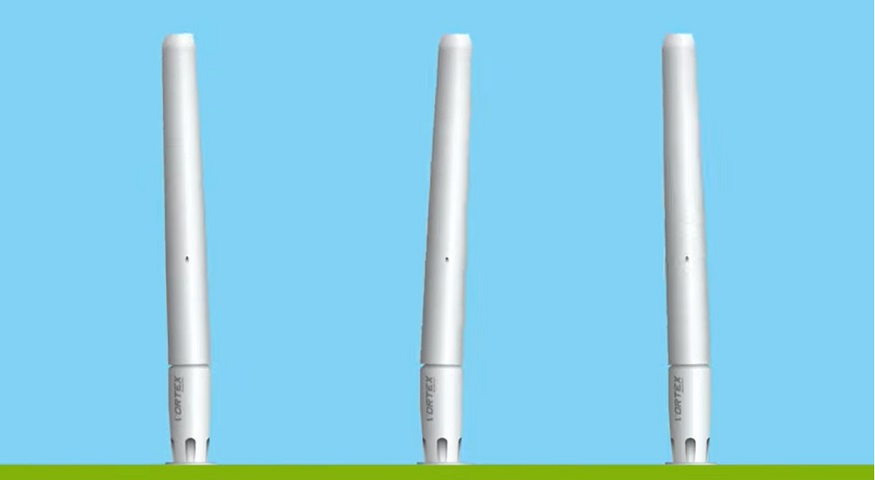
Low Retail Price of Electricity
In developing countries, use of renewable energy is only available to high-income people. Indeed, the demand for green energy is dominated by the practicality of using cheap energy. In some developing countries, using fossil-fuel power is cheaper than investing in solar or wind energy, particularly for industrial and civil sectors. The low retail price of electricity is maintained for the purpose of sustaining economic development. However, it has unintendedly prevented renewable natural resources from being explored and invested in.
Policy Uncertainty
One of the big challenges for the implementation of bladeless wind turbines is the uncertainty in policies. Different countries have their own policies about how to facilitate renewable energy sources. Particularly, policy uncertainty relating to carbon emissions reduction and fossil fuels significantly affects investments in renewable energy. For instance, Thailand and China have approved policies with the aim of building a future of renewable resources. As a result, investments in green technologies have sharply increased in both countries in recent years. In some developing countries, infrastructure of the power grid is outdated. This is a great concern for investors. Inconsistent policies fail to respond to the output of electricity produced by individual investors, which results in the loss of capital investment over a longer period.
Introduction
The impact of the current generation’s energy consumption on the next generations poses issues that need to be effectively addressed. In 2018, global energy consumption peaked at 13,864.9 Mtoe. This year’s increase in total energy consumption of 2.9%, which is double the average growth of the 10 preceding years, highlights the urgency and importance of these issues. Facing this enormous problem, national governments need to work closely together to develop timely, coherent, and considered policies. Renewable energy plays an important role in mitigating and adapting to climate change in countries around the world. Electricity generation from sustainable sources achieved 7% growth in 2020, accounting for a large proportion of the 3% increase in renewable energy use. Renewable electricity generation in 2021 is expected to expand by more than 8% with a major contribution of solar photovoltaics (PV) and wind.
Besides the obvious advantages of renewable energy, such as zero greenhouse gases (GHG) emissions and low operational costs, solar panels and wind turbines also have their own drawbacks. The use of solar panels raises enormous questions about expired solar cells, while wind turbines have been considered unsuitable for urban areas. Harnessing wind power in urban areas requires overcoming the disadvantages of vibration and noise as well as challenges related to the space of installation. Bladeless wind turbines (BWT) are an advanced technology that converts wind energy to electrical energy in cities.

BWT can easily be deployed in urban areas and even integrated into the overall architecture of buildings. The advantages of this approach are that it reduces noise, avoids intermittent shade effects, and prevents impacts on migratory birds. Considered a solid-state wind energy transformer, the maintenance costs are generally lower than those of conventional wind turbines. BWT can be combined with solar energy panels to form a hybrid system, which could be considered for increasing electrical power production and improving the system’s overall efficiency. Accordingly, BWT could be considered a sustainable solution for wind energy in cities.
Occupying only vertical space, the cylindrical form of BWT was judged by experts to be suitable for implementation in residential areas. With the advanced design, BWT would contribute to the modernity in urban architecture.
Current State
The innovative aspects of bladeless wind turbines and their capacity to produce electricity at low wind speeds under turbulent flow conditions in the city surroundings are the key factors that promote the deployment of this technology in built-up areas with significant potential for wind energy. Such areas in cities include rooftops of high-rise buildings, areas around multistory buildings, city roads, railway tracks and subway networks.
Despite being in the prototype stage, the vortex bladeless has proven its value as a new wind energy technology particularly designed for on-site generation as it can be placed in an open environment or residential areas. In addition, bladeless wind turbines can work on or off grid, along with solar panels or other generators.
Two commercial-scale bladeless turbines have been developed with generation capabilities of 100 W and 4kW. Smaller-scale turbines measure 3 meters in height and weight only 10 kilograms but supply enough power for lighting and some utilities. Since such small turbines are not yet industrially produced, an investment is estimated to cost about $250. Larger-scale turbines with a height of 13 meters and total weight of about 100 kilograms can generate continuous electricity for a house if installed in a location with enough wind. A tentative price for this model is evaluated to be about $5000.
In addition to the two commercial models, development of a giant vortex turbine model is also underway. Such a bladeless turbine would measure 150 m in height and 100 tons in weight and was calculated to be able to generate 1MW. The estimated costs for this model have not been determined yet but are expected to have a lower price in proportion to its capacity compared to the two smaller models.
The average cost of power generation per Watt for bladeless wind turbines may be higher than that for solar panels. However, bladeless turbines are still economically attractive in windy regions where the system are able to function more effectively than solar panels do.
Opportunities and Challenges
Urbanization and growth in economic activity are the cause of 75 percent of global primary energy consumed by urban areas, and around 60 percent of the world’s total greenhouse gases are produced in cities.

Authorities need to address global climate change by 2030, while meeting the goals set for reducing air pollution, energy security, and long-term economic growth. Through improving the share of renewable energy in electricity production, European countries have the opportunity to become nearly carbon neutral by 2050. For example, Finland is aiming to become self-sufficient with regard to electricity production in 2025, which is based on renewable energy.13 More than 260 GW of renewable energy capacity has been generated in 2020, to which wind energy contributed 111 GW.14 Unlike solar PVs, wind energy systems are able to operate during the day and nighttime. The adoption of wind energy systems is worth considering as a technological strategy for sustainable development.
The urban wind energy resource has not efficiently been explored yet. Deploying wind turbines in cities encounters some challenges such as availability of sites, impacts of grid power quality, and public acceptability. In addition, due to the presence of obstructions, the turbulent nature of wind is a complication. Thus, small wind turbine technology adapted to the built environment was developed. Small wind turbines are environmentally friendly. The life cycle of a wind turbine model (V90,3MW) was investigated, and the system was estimated to become carbon neutral after 6.6 months of energy production. Despite advanced design techniques for small wind turbines, technical matters related to safety, vibration, and noise under low urban wind regime and turbulent flow cannot be perfectly controlled due to the rapidly changing wind direction and the presence of obstacles. The prominent concerns of small turbines include fatigue damage, inconsistent power output, and unexpected downtimes due to failure during operation. Turbulent wind interactions with building structures have impeded the safety, durability and performance of small turbines.
These problems can be addressed with the design of BWT, which harvests energy from oscillation. BWT is designed to generate energy from low wind speeds in residential areas. With its cylindrical shape BWT adapts quickly to wind direction and wind turbulent intensity by a self-synchronization system that allows to capture a wider range of wind speeds and stay in resonance without any interference. Experimental and analytical data showed that BWT can generate electricity at wind speeds as low as 3 m/s, where conventional wind turbines may not attain required performance. Without moving gears, BWT overcomes the disadvantages of small turbines such as friction losses, and investment and maintenance costs. Compared to small turbines, the price of BWT and the cost required for installation are of interest to investors.
With wind speeds in the range of 3 to 8 m/s, BWTs perform better than other wind turbines. However, beyond 12 m/s BWTs stop working while regular wind turbines keep generating. Wind speeds are estimated to be ~4 m/s in 27% of the neighborhoods over 20 km from the city center of London, and average wind speeds in European locations are between 4 to 6 m/s. The potential of BWTs is promising, but its implementation requires more studies on wind data. The optimization of bladeless turbine design is also necessary to enhance their efficiency.
Barriers and Recommendations
To harness the potential of wind energy, it is necessary for BTWs to be adopted and widely used in urban areas. Therefore, the obstacles and barriers to deployment of bladeless wind turbines need to be investigated in order to implement this technology.

Low Retail Price of Electricity
In developing countries, use of renewable energy is only available to high-income people. Indeed, the demand for green energy is dominated by the practicality of using cheap energy. In some developing countries, using fossil-fuel power is cheaper than investing in solar or wind energy, particularly for industrial and civil sectors. The low retail price of electricity is maintained for the purpose of sustaining economic development. However, it has unintendedly prevented renewable natural resources from being explored and invested in.
Policy Uncertainty
One of the big challenges for the implementation of bladeless wind turbines is the uncertainty in policies. Different countries have their own policies about how to facilitate renewable energy sources. Particularly, policy uncertainty relating to carbon emissions reduction and fossil fuels significantly affects investments in renewable energy. For instance, Thailand and China have approved policies with the aim of building a future of renewable resources. As a result, investments in green technologies have sharply increased in both countries in recent years. In some developing countries, infrastructure of the power grid is outdated. This is a great concern for investors. Inconsistent policies fail to respond to the output of electricity produced by individual investors, which results in the loss of capital investment over a longer period.
Post a Comment:
You may also like:

Featured Articles
Horizontal Axis Wind Turbine Design
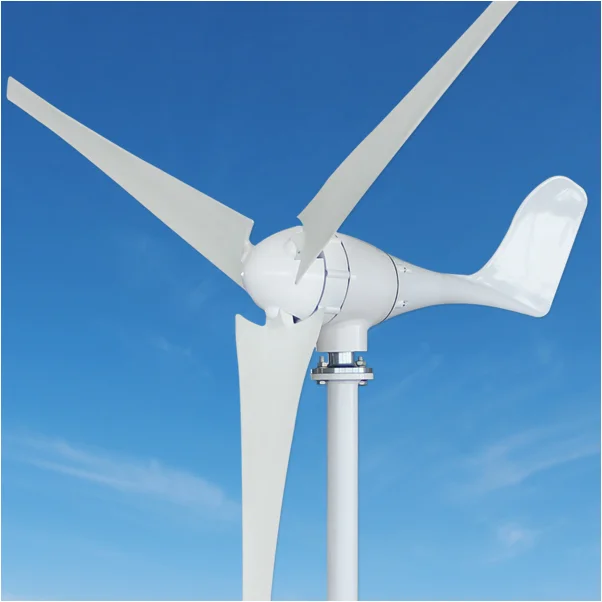 Today, the most common design of wind turbine is the horizontal axis wind turbine (HAWT). That is, the axis of rotation is ...
Today, the most common design of wind turbine is the horizontal axis wind turbine (HAWT). That is, the axis of rotation is ...
 Today, the most common design of wind turbine is the horizontal axis wind turbine (HAWT). That is, the axis of rotation is ...
Today, the most common design of wind turbine is the horizontal axis wind turbine (HAWT). That is, the axis of rotation is ...Overvoltage Protection for Wind ...
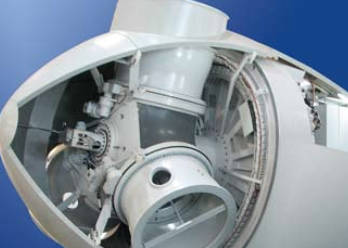 Due to their principle of operation, wind turbines have to be set up outdoors and are used in a wide range of ...
Due to their principle of operation, wind turbines have to be set up outdoors and are used in a wide range of ...
 Due to their principle of operation, wind turbines have to be set up outdoors and are used in a wide range of ...
Due to their principle of operation, wind turbines have to be set up outdoors and are used in a wide range of ...What is a Wind Turbine?
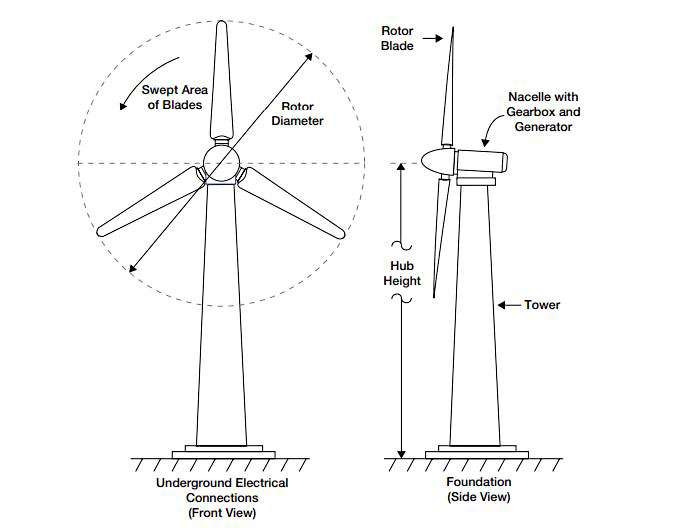 Wind turbines are devices that convert the kinetic energy from the wind into mechanical power, which can then be used to generate ...
Wind turbines are devices that convert the kinetic energy from the wind into mechanical power, which can then be used to generate ...
 Wind turbines are devices that convert the kinetic energy from the wind into mechanical power, which can then be used to generate ...
Wind turbines are devices that convert the kinetic energy from the wind into mechanical power, which can then be used to generate ...Household Wind Energy System Components
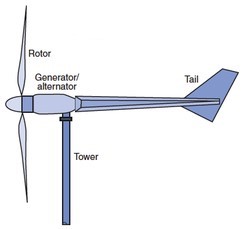 Basic parts of home wind energy systems generally comprise a rotor, a generator or alternator mounted on a frame, a tail ...
Basic parts of home wind energy systems generally comprise a rotor, a generator or alternator mounted on a frame, a tail ...
 Basic parts of home wind energy systems generally comprise a rotor, a generator or alternator mounted on a frame, a tail ...
Basic parts of home wind energy systems generally comprise a rotor, a generator or alternator mounted on a frame, a tail ...Wind Turbine Glossary
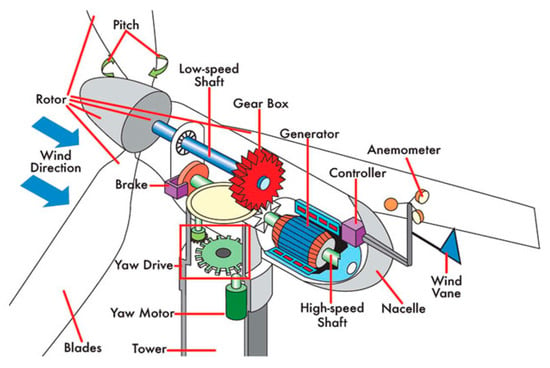 Wind energy is the kinetic energy that is present in moving air. The amount of potential energy depends mainly on wind speed, but ...
Wind energy is the kinetic energy that is present in moving air. The amount of potential energy depends mainly on wind speed, but ...
 Wind energy is the kinetic energy that is present in moving air. The amount of potential energy depends mainly on wind speed, but ...
Wind energy is the kinetic energy that is present in moving air. The amount of potential energy depends mainly on wind speed, but ...